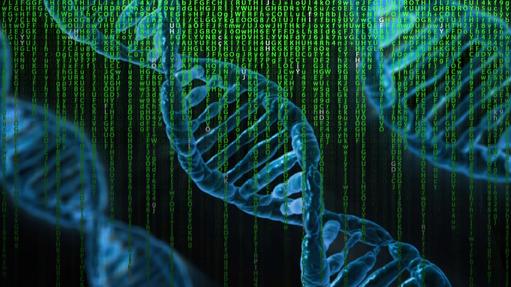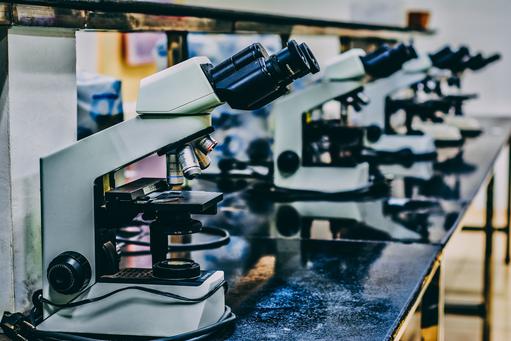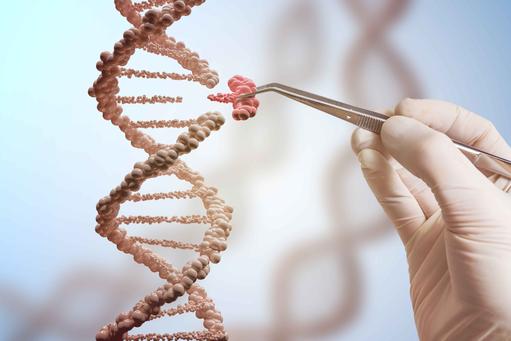|
Notwithstanding, replacing the US$ with the Chinese ¥ seems to be part of Beijing’s long-term strategy, as Beijing encourages its trading partners to accept the ¥ as payment for Chinese exports. China’s recent trading agreements with Canada and Qatar for instance have been based upon local currencies rather than the US$. China, which is the biggest importer of oil, is preparing to launch a crude oil futures contract denominated in Chinese ¥ and convertible into gold. European, Asian and Middle Eastern countries have embarked on domestic programs to exclude the US$ from international trade transactions. Also, oil exporting countries are increasingly able to choose which currencies they wish to trade in. At the same time, oil-producing countries no longer seem so interested in turning their revenues into “petrodollars. For the past decade, President Putin of Russia has been calling for the international community to re-evaluate the US$ as the international reserve currency. All this and more suggests that increasingly, emerging economies may transition from their undivided dependence on the US$ for international trade settlement to a multipolar monetary arrangement. Whilst small relative to the full extent of global trade, it is instructive to view these changes within a broader Asian context.
The US has had little exposure to China and Asia
One outcome of America’s pre-eminent global economic position and the financial success of American life sciences companies is that corporate leaders and health professionals tend to have little or no in-depth exposure to Chinese and Asian culture and markets. For example, few Fortune 500 senior executives have worked in China; few American life sciences corporations have sought in-depth briefings of Asian markets and few US students and scientists have studied or carried out research in China. Instead, American life science corporate leaders tend to be US-centric; they condemn China for its IP theft and recommend not to invest in China because a condition of doing so is that you are obliged to part with some of your IP.
Asia a potential economic powerhouse
This distancing has resulted in life science professionals “misdiagnosing” China in a number of ways, which we will discuss. One misdiagnosis is to conflate China with Asia. Asia is comprised of 48 countries. East Asia includes China, Japan and North and South Korea. South Asia includes India, Pakistan and Bangladesh. South East Asia includes Indonesia, Malaysia, Philippines, Singapore and Thailand. These three sub-regions link 5bn people through trade, finance, infrastructure and diplomatic networks, which together represent 40% of the world’s GDP. China has taken a lead in building new infrastructure across Asia - the new Silk Roads - but will not necessarily lead this vast region alone. Rather, as Khanna reminds us, “Asia is rapidly returning to the centuries-old patterns of commercial and cultural exchanges, which thrived long before European colonialism and American dominance”.
The difference between IP theft and imitating ‘what works’
Market driven Chinese start-ups, supported by the government, are expected to transform China into a world leader in health life sciences by 2030. The thing to understand about China is that it is not just a few start-ups that steal and copy American IP but thousands, which then aggressively compete. This entails cutting prices, improving and adapting their product offerings, developing leaner operations and aligning their strategies and business models to the demands of different markets. The vast scale of this activity has led to a unique cadre of über agile Chinese entrepreneurs, who imitate successful business models and then engage in value added culture-specific product development processes. This has led to Chinese companies becoming exemplary “market driven” implementors. By contrast American companies tend to be “mission driven” and operate a “single bullet” business model and are either slow or reluctant to adapt to the demands of different markets. This results in US discoveries being exploited in Asia by Chinese rather than American companies. We suggest that there are significant benefits to be derived from American life sciences companies developing joint ventures with market driven Chinese start-ups even if it means surrendering some IP.
As a postscript, it is worth pointing out that the first Chinese patent was only granted in 1985 and recently, after decades of widespread theft, IP protection in China has improved at lightning speed. As Chinese companies issue more patents, the keener they are to protect them. According to the World Intellectual Property Organization in 2017 China accounted for 44% of the world’s patent filings, twice as many as America.
US inventions exploited in Asia by Chinese start-ups
An illustration of a disruptive life science technology invented in the US but exploited faster and more extensively in China is CRISPR-Cas9 (an acronym for Clustered Regularly Interspaced Short Palindromic Repeats), which is generally considered to be the most important invention in the history of biology. The initial discovery was made in 2012 by a collaboration between Jennifer Doudna, at the University of California, Berkeley, USA and French scientist Emmanuelle Charpentier. Applications of CRISPR technology are essentially as infinite as the forms of life itself. Since its discovery, modified versions of the technology by Chinese scientists have found a widespread use to engineer genomes and to activate or to repress the expression of genes and launch numerous clinical studies to test CRISPR-Cas9 in humans.
Virtuous circle
Notwithstanding, transforming CRISPR genomic editing technologies into medical therapies requires mountains of data and advanced AI capabilities. China has both. The more genomic data you have the more efficacious clinical outcomes are likely to be. The better your clinical outcomes the more data you can collect. The more data you collect the more talent you attract. The more talent you attract the better the clinical outcomes. China is better positioned than America to benefit from this virtuous circle. China’s less than stringent regulation with regards to privacy and storing personal data gives it a distinct competitive advantage over American and Western life sciences companies. China also has more efficient means than any Western nation for collecting and processing vast amounts of personal data.
Collecting personal data
Any casual visitor to China will tell you that one of the striking differences with Western nations is that the Chinese economy is cashless and card-less. Citizens pay for everything and indeed organise their entire lives with a mobile app called WeChat, a multi-purpose messaging, social media and mobile payment app developed by Tencent. WeChat was first released in 2011 and by 2018 it was one of the world's largest standalone mobile apps, with nearly 1bn daily users who every day send about 38bn messages. Not only is WeChat China's biggest social network it is also where people turn to book a taxi, hotel or a flight, order food, make a doctor’s appointment, file police reports, do their banking or find a date and has become an integral part of the daily life of every Chinese citizen. State-run media and government agencies also have official WeChat accounts, where they can directly communicate with users. Further, an initiative is underway to integrate WeChat with China’s electronic ID system. It may be hard for people outside of China to grasp just how influential WeChat has become. There is nothing in any other country that is comparable to WeChat, which captures an unprecedented amount of data on citizens that no other company elsewhere in the world can match. This represents a significant competitive advantage. Applying AI and machine learning technologies to such vast data sets provide better and deeper insights and patterns. These vast and escalating data sets, and advanced AI capabilities for manipulating them, give China a significant competitive advantage in the high growth life sciences industry, which increasingly has become digital.
Processing personal data
AI is another example of a technology invented in the West and implemented much faster in China. The “watershed” moment for China was in 2017, when AlphaGo became the first computer program to defeat a world champion at the ancient Chinese game of Go. Since then, China has been gripped by “AI fever”.
Until recently AI machines were not much better than trained professionals at spotting anomalies and mutations in assays and data. This changed in early-2,000 with the ubiquitous spread of mobile telephony and the confluence of vast data sets and the development of neural networks, which made the onerous task of “teaching” a computer rules redundant. Neural networks allow computers to approximate the activities of the human brain. So, instead of teaching a computer rules, you simply feed it with vast amounts of data and neural networking and deep learning technologies identify anomalies and mutations in seconds with exquisite accuracy.
The Beijing Genetics Institute
An illustration of the scale and seriousness of China’s intent to become a world-leader in life sciences and to eclipse similar initiatives by the US is the 2016 launch of a US$9bn-15-year national initiative to develop technologies for interpreting genomic and healthcare data. This national endeavour followed the launch in 1999 of the Beijing Genomics Institute (BGI), which today is a recognised global leader in next generation genetic sequencing. In 2010, BGI received US$1.5bn from the China Development Bank, recruited 4,000 scientists and established branches in the US and Europe. In 2016 BGI created the China National GeneBank (CNGB) on a 47,500sq.m site in Shenzhen, which benefits from BGI’s high-throughput sequencing and bio-informatics capacities. CNGB officially opened in July 2018 and is the largest gene bank of its kind in the world. Dozens of refrigerators can store samples at temperatures as low as minus 200 degrees Celsius, while researchers have access to 150 domestically developed desktop gene sequencing machines and a US$20m Revolocity machine, known as a “supersequencer”. The Gene Bank enables the development of novel healthcare therapies that address large, fast growing and underserved global markets and to further our understanding of genomic mechanisms of life. Not only has CNGB amassed millions of bio-samples it has storage capacity for 20 petabytes (20m gigabytes) of data, which are expected to increase to 500 petabytes in the near future. The CNGB represents the new generation of a genetic resource repository, bioinformatics database, knowledge database and a tool library, “to systematically store, read, understand, write, and apply genetic data,” says Mei Yonghong, its Director.
US life sciences benefit by engaging with Chinese companies
Lee, in his book about AI, suggests that it is not so much Beijing’s policies that keep American firms out of the Chinese markets, but American corporate mindsets, which misdiagnose Chinese markets, do not adapt to local conditions and fail to understand the commercial potential of Chinese start-ups and consequently get squeezed out of the Chinese market.
Lessons from Groupon’s failure in China
Groupon failed to adapt its core offering when group discounts in China faded in popularity and as a consequence it rapidly lost market share. Meituan, founded in 2010 as a Chinese copy of Groupon, quickly adapted to changing market conditions by extending its offerings to include cinema tickets, domestic tourism and more importantly, “online-to-offline” (O2O) services such as food and grocery delivery, which were growing rapidly.
In October 2015, Meituan merged with Dianping, another Chinese copy of Groupon, to become Meituan-Dianping the world's largest online and on-demand booking and delivery platform. The company has become what is known as a transactional super app, which amalgamates lifestyle services that connect hundreds of millions of customers to local businesses. It has over 180m monthly active users and 600m registered users and services up to 10m daily orders and deliveries. In the first half of 2018 Meituan-Dianping facilitated 27.7bn transactions (worth US$33.8bn) for more than 350m people in 2,800 cities. That is 1,783 enabled services every second of every day, with each customer using the company’s services an average of three times a week. Meituan-Dianping IPO’d in 2018 on the Hong Kong stock exchange and raised US$4.2bn with a market cap of US$43bn.
Efficiency also drives innovation. Meituan-Dianping’s Smart Dispatch System, introduced in 2015, schedules which of its 600,000 motorbike riders will deliver the millions of food orders it fulfils daily. It now calculates 2.9bn route plans every hour to optimize a rider’s ability to pick up and drop off up to 10 orders at once in the shortest time and distance. Since Smart Dispatch launched, it has reduced average delivery time by more than 30% and riders complete 30 orders a day, up from 20, increasing their income. In 2019, the American business magazine Fast Company ranked Meituan-Dianping as the most innovative company in the world.
Takeaways
Although Meituan-Dianping and other companies we mention may not be well known in the West and are not in the health life sciences industry, they are engaged in highly complex digital operations disguised as simple transactions, which enhance the real-world experiences of hundreds of millions of consumers and millions of merchants. To achieve this the companies have amassed vast amounts of data and have perfected AI and machine learning technologies, which make millions of exquisitely accurate decisions every hour, 24-7, 365 days a year. Such AI competences are central to the advancement of health life sciences. American life science professionals might muse on the adage: “make your greatest enemy your best friend” and consider trading some of their IP to joint venture with fast growing agile Chinese data companies in a strategy to restore and enhance their market positions.
|
























